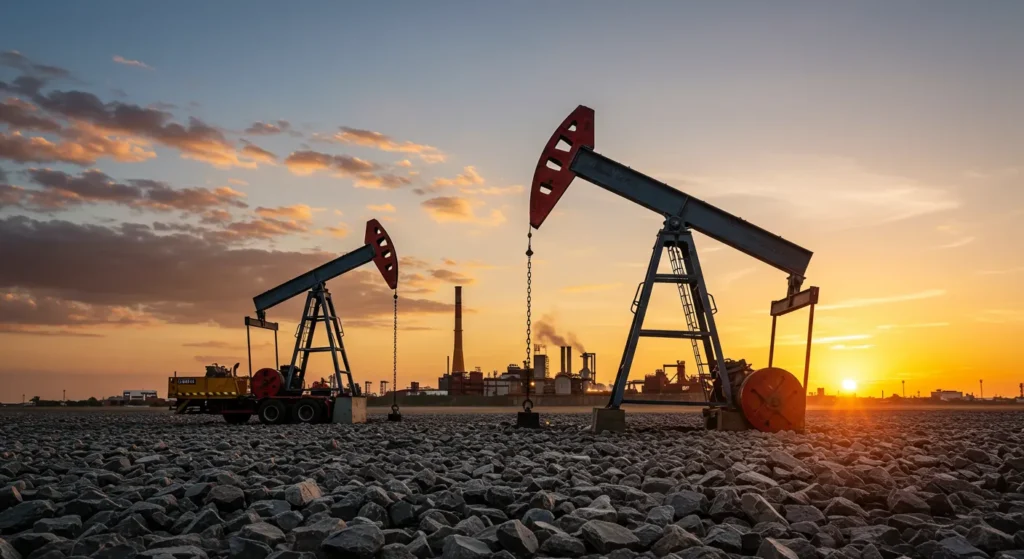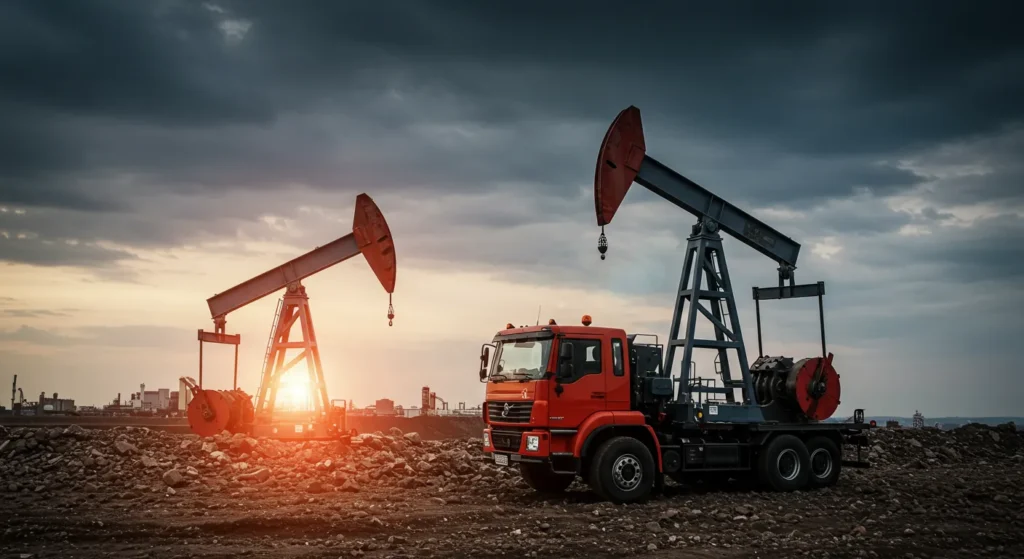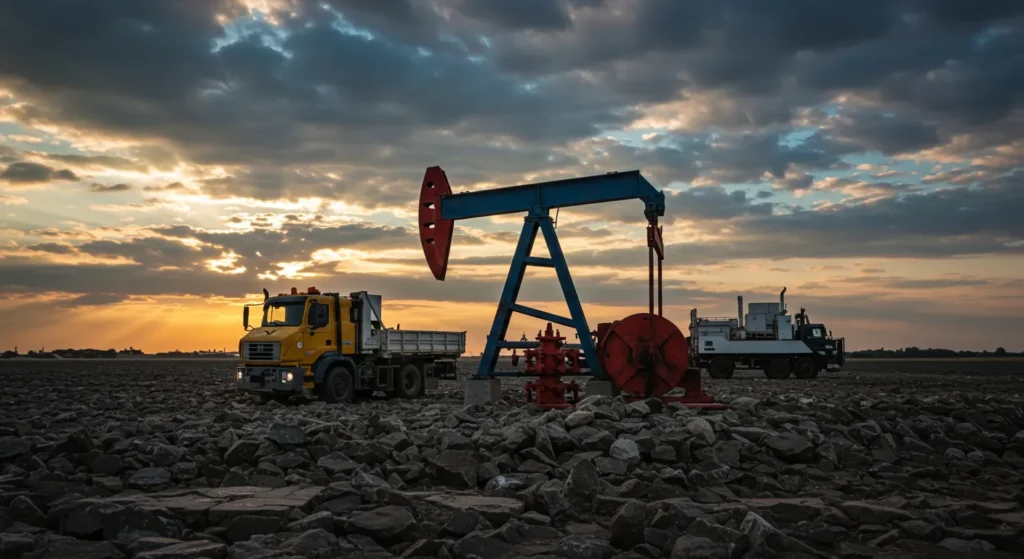Table of Contents
What Is Conventional Oil?
Conventional oil, often referred to as crude oil, is a naturally occurring fossil fuel derived from ancient organic materials buried deep underground. It serves as the backbone of modern energy systems and is essential for powering vehicles, industries, and homes.
Definition of Conventional Oil
Oil extracted from underground reservoirs using traditional drilling methods is known as conventional oil. It is typically found in liquid form and requires minimal processing compared to unconventional resources.
How Is Conventional Oil Formed?
The formation of conventional oil is a geological process that spans millions of years. Organic materials, such as plant and animal remains, are buried under layers of sediment. Over time, heat, pressure, and geological changes transform these materials into hydrocarbons—the primary components of oil.
Characteristics of Conventional Oil

Conventional oil exhibits several defining characteristics:
- High Hydrocarbon Content: Rich in hydrocarbons, making it an efficient energy source.
- Low Sulfur Levels: Typically lighter and less sulfurous compared to unconventional oil.
- Fluidity: Exists in a liquid state, making extraction and transportation easier.
Key Properties of Conventional Oil
- Viscosity: Generally lower than heavy crude, allowing for efficient flow.
- Energy Density: Offers a high energy output per unit volume.
- Combustion Efficiency: Burns efficiently, powering engines and industrial operations effectively.
How Conventional Oil Differs from Unconventional Oil
Conventional oil is extracted using straightforward methods, while unconventional oil, such as shale or tar sands, requires advanced technologies and additional processing. The key differences lie in the cost, extraction methods, and energy efficiency.
Also Read: Crafting Unforgettable Late-Night Celebrations
Extraction and Production of Conventional Oil
Conventional oil production relies on accessing underground reservoirs. The process involves locating reservoirs, drilling wells, and maintaining pressure to extract the oil effectively.
Overview of Conventional Oil Extraction Methods

The primary methods include:
- Vertical Drilling: Traditional technique for reaching reservoirs.
- Horizontal Drilling: Extends reach within a reservoir for increased output.
- Enhanced Oil Recovery (EOR): Techniques like gas injection to boost recovery rates.
Drilling Techniques for Conventional Oil
Drilling rigs employ advanced technologies to access reservoirs. Engineers utilize tools to monitor drilling depth, pressure, and composition to ensure efficiency and safety.
Importance of Reservoir Pressure in Extraction
Reservoir pressure drives the flow of oil to the surface. Over time, pressure declines, necessitating secondary recovery methods like water or gas injection to maintain production levels.
Stages in the Conventional Oil Production Process
- Exploration: Geologists locate potential reservoirs.
- Drilling: Wells are drilled to access the reservoir.
- Production: Oil is extracted and transported for processing.
- Refining: Crude oil is processed into usable products.
Uses of Conventional Oil
Conventional Oil in the Energy Sector
As a primary energy source, conventional oil powers:
- Electricity Generation: Provides energy for power plants.
- Transportation: Fuels cars, trucks, ships, and planes.
Industrial Applications of Conventional Oil
Beyond energy, oil is integral to manufacturing and petrochemical industries. It serves as a base for plastics, lubricants, and synthetic materials.
Read Also: The Surprising Benefits of a Virtual Guitar Teacher for Quick Chord Mastery
Advantages of Conventional Oil
- High Energy Density: Offers significant energy output for its volume.
- Ease of Extraction: Requires less complex methods compared to alternatives.
- Established Infrastructure: Extensive global systems support its extraction, refining, and distribution.
Disadvantages of Conventional Oil
- Environmental Impacts: Extraction and combustion contribute to ecological harm.
- Greenhouse Gas Emissions: A leading source of CO2 emissions.
- Oil Spills: Catastrophic consequences for marine ecosystems.
- Finite Resource: Reserves are depleting, increasing reliance on alternatives.
Conventional Oil vs. Unconventional Oil

What Are Unconventional Oil Resources?
Unconventional oil includes resources like shale, oil sands, and tight oil. These require advanced technologies for extraction.
Comparison of Extraction Methods
- Conventional: Relies on drilling and natural reservoir pressure.
- Unconventional: Involves hydraulic fracturing, horizontal drilling, and extensive processing.
Cost Differences Between Conventional and Unconventional Oil
Conventional oil is generally less expensive to produce due to more straightforward extraction techniques. Unconventional methods often involve higher costs and energy inputs.
Also Read: Air Transportation of Pets on a Turnkey Basis: A Comprehensive Guide
Global Outlook on Conventional Oil
Major Producers of Conventional Oil
Countries like Saudi Arabia, Russia, and the United States lead in conventional oil production. OPEC nations hold significant reserves and influence global markets.
Future Trends and Challenges in the Conventional Oil Industry
- Declining Reserves: Poses challenges to energy security.
- Technological Advancements: Innovations aim to improve recovery rates and reduce environmental impacts.
- Shift to Renewables: Increasing focus on sustainable alternatives.
The Role of Conventional Oil in Today’s World
Conventional oil remains vital for global energy needs. Despite challenges, it supports industries and economies worldwide.
Transitioning Toward Renewable Alternatives
While conventional oil plays a central role, transitioning to renewable energy is essential for sustainability. The energy sector must balance current demands with future aspirations for a greener world.

